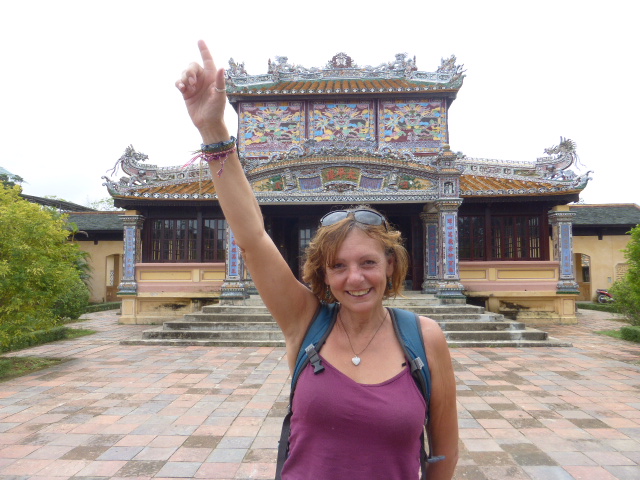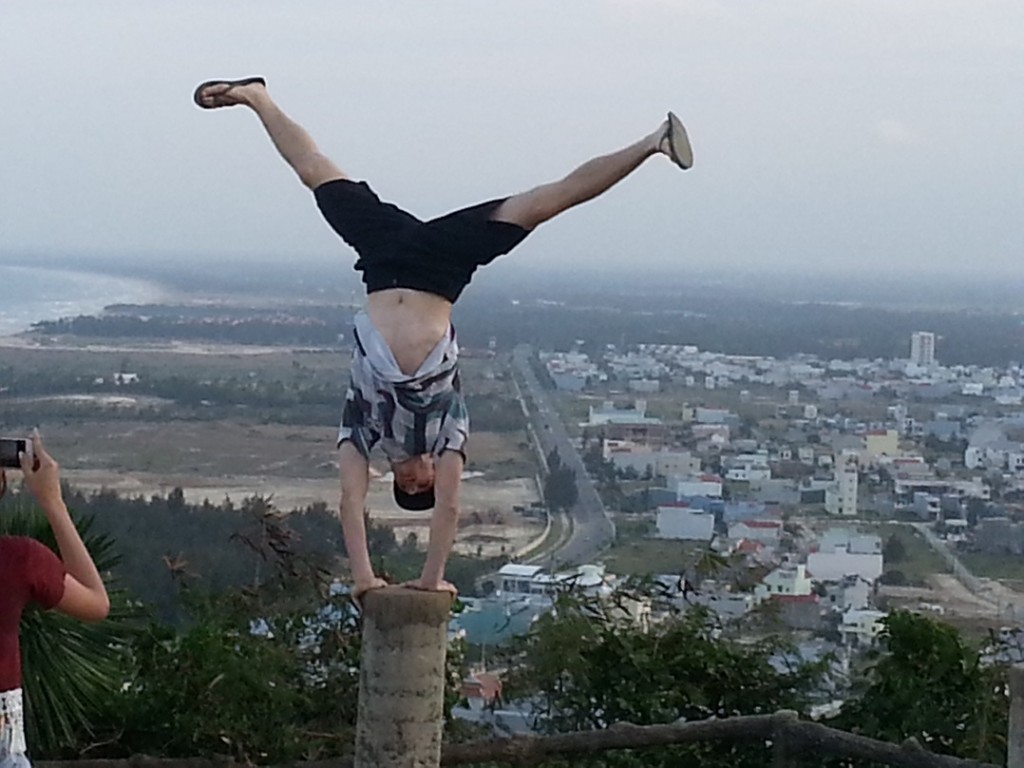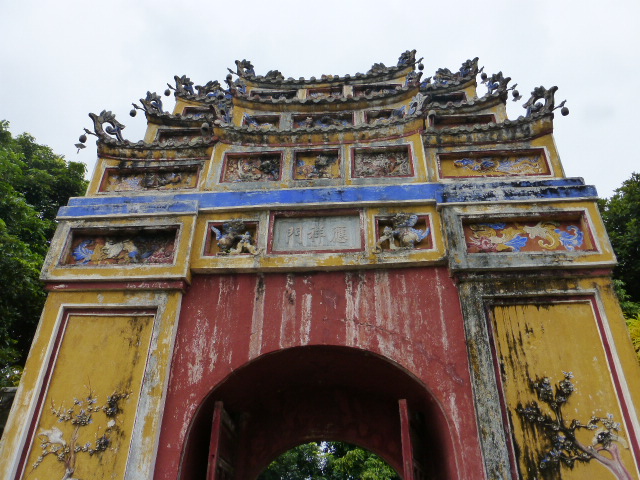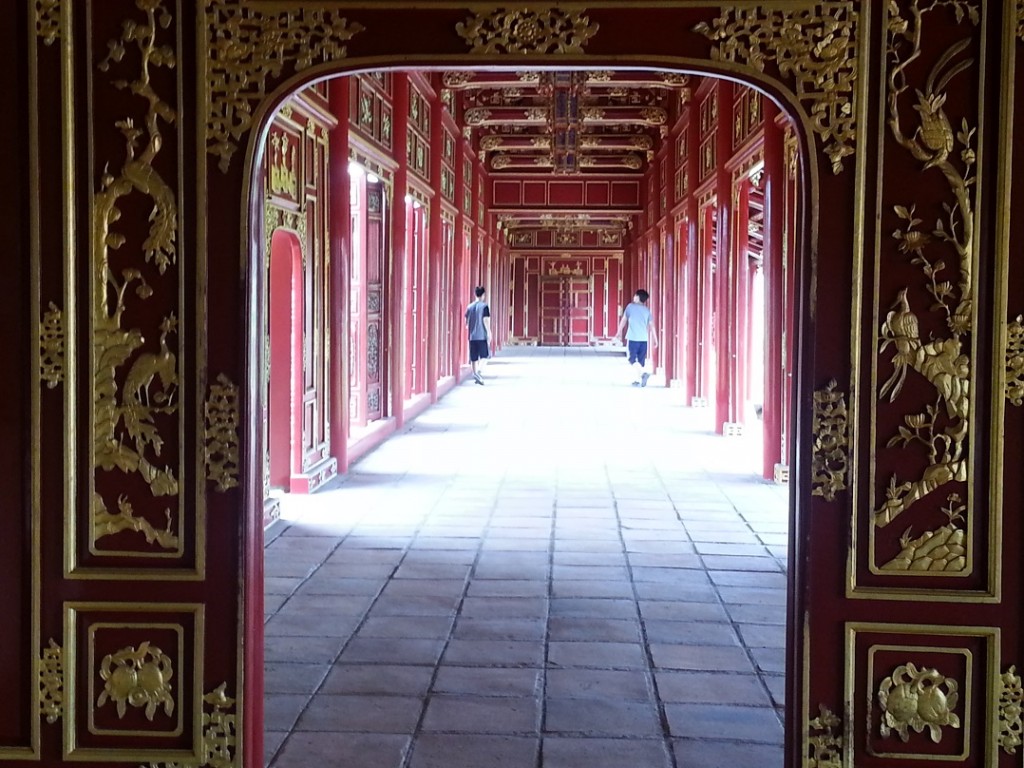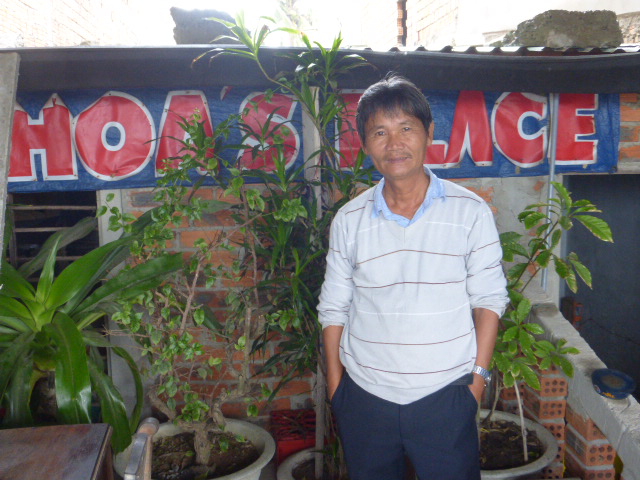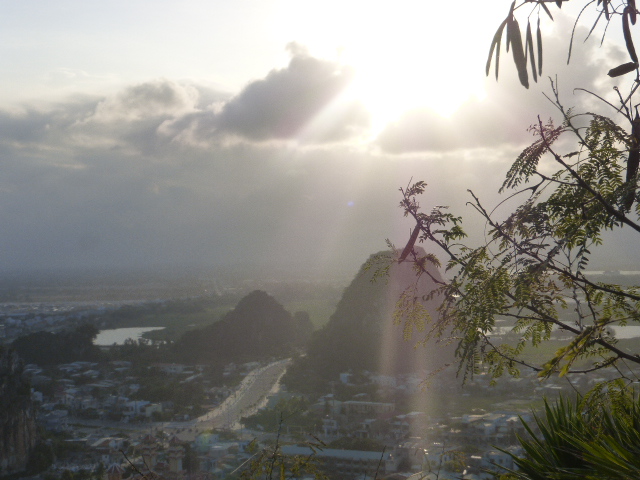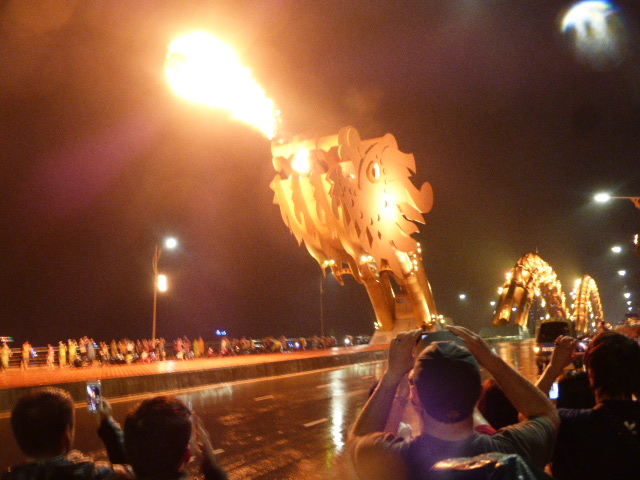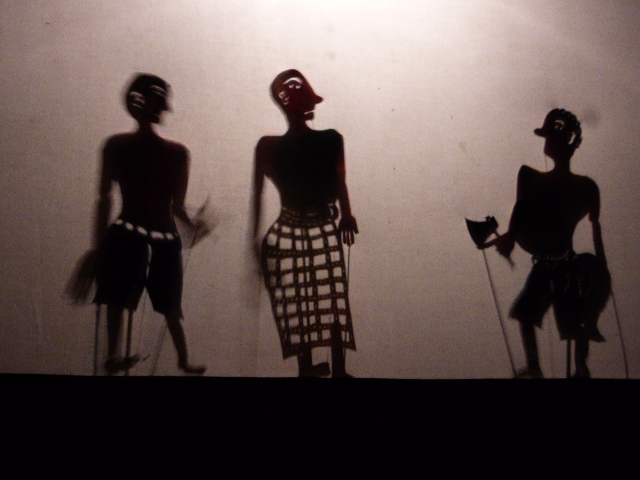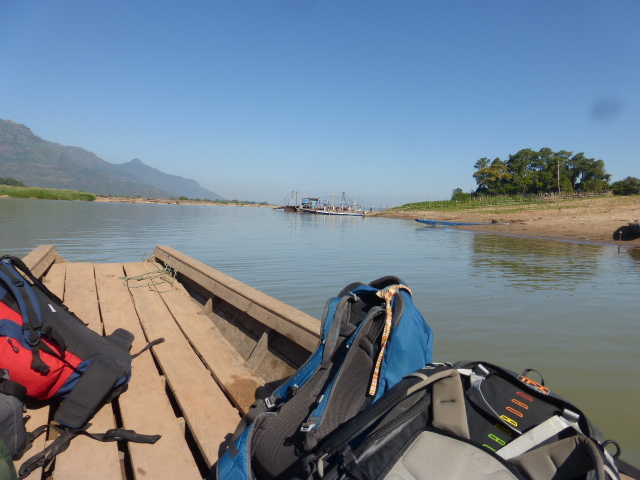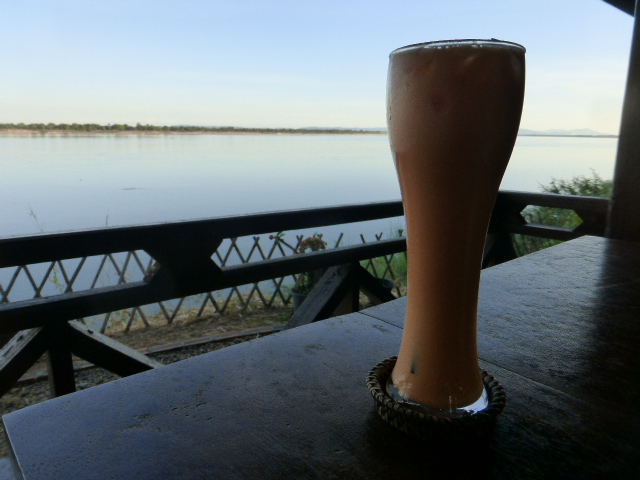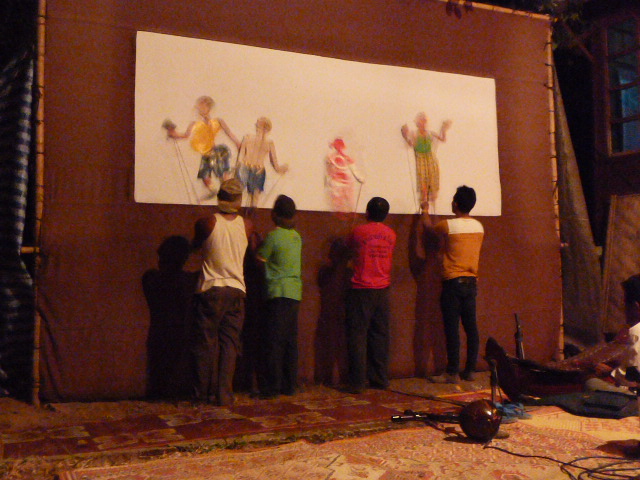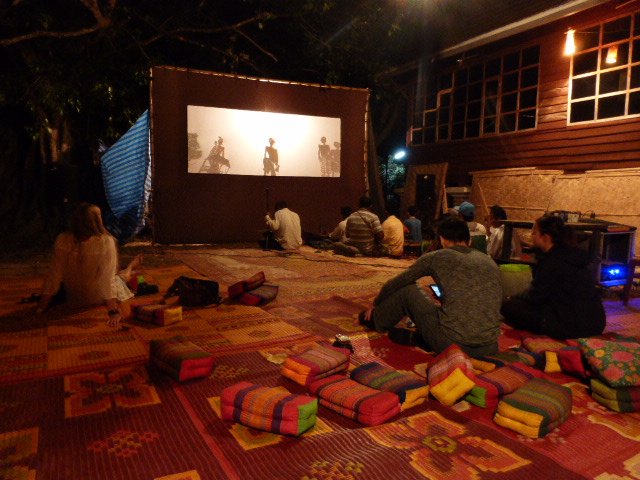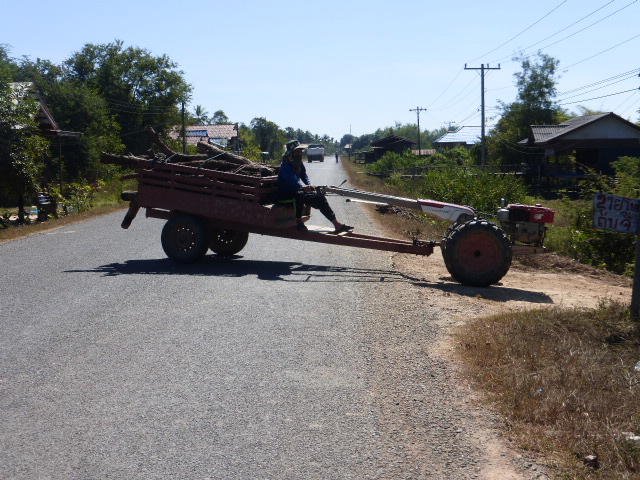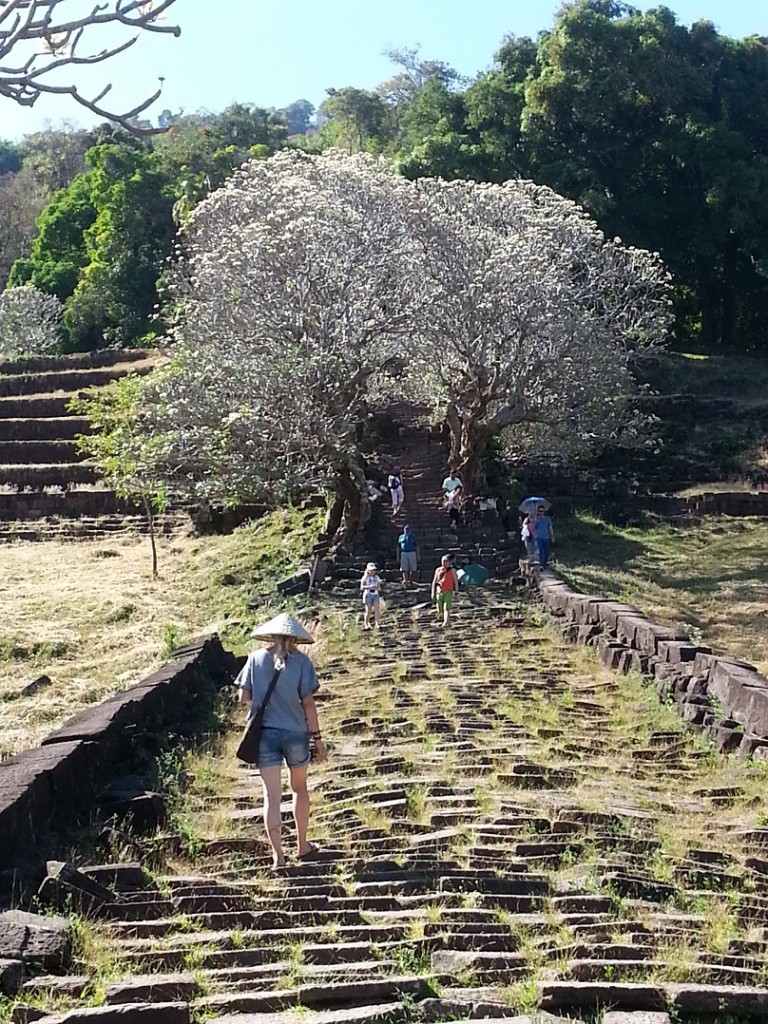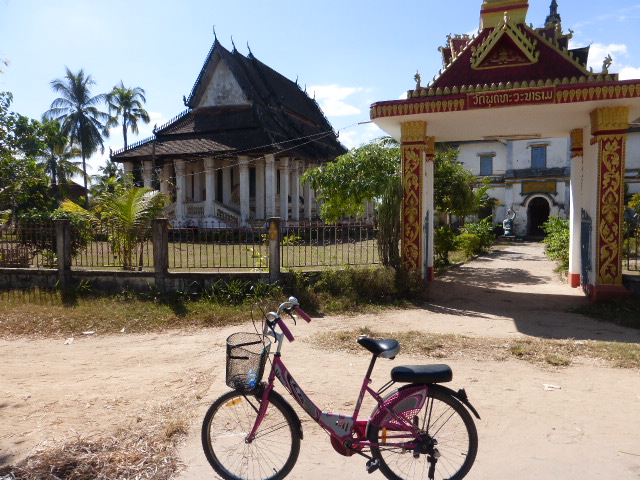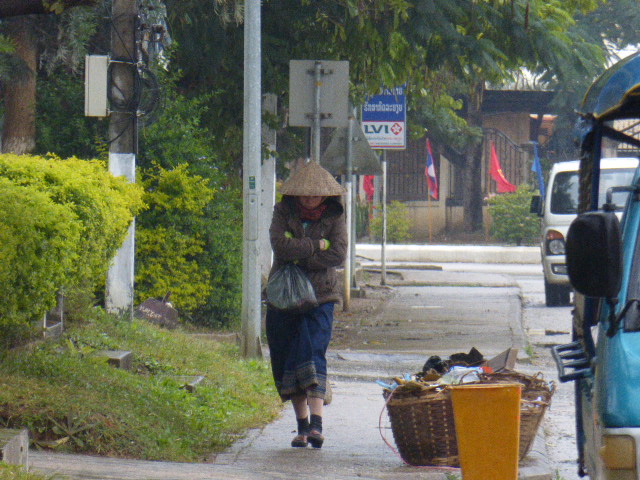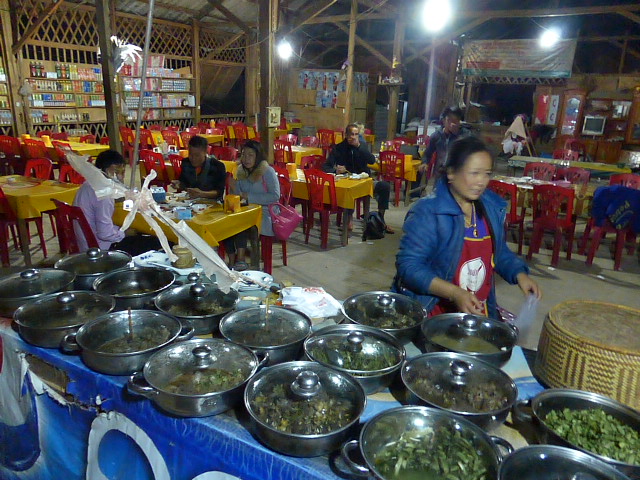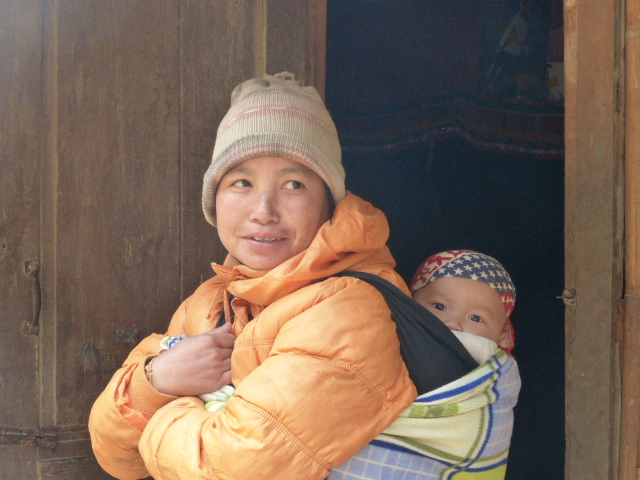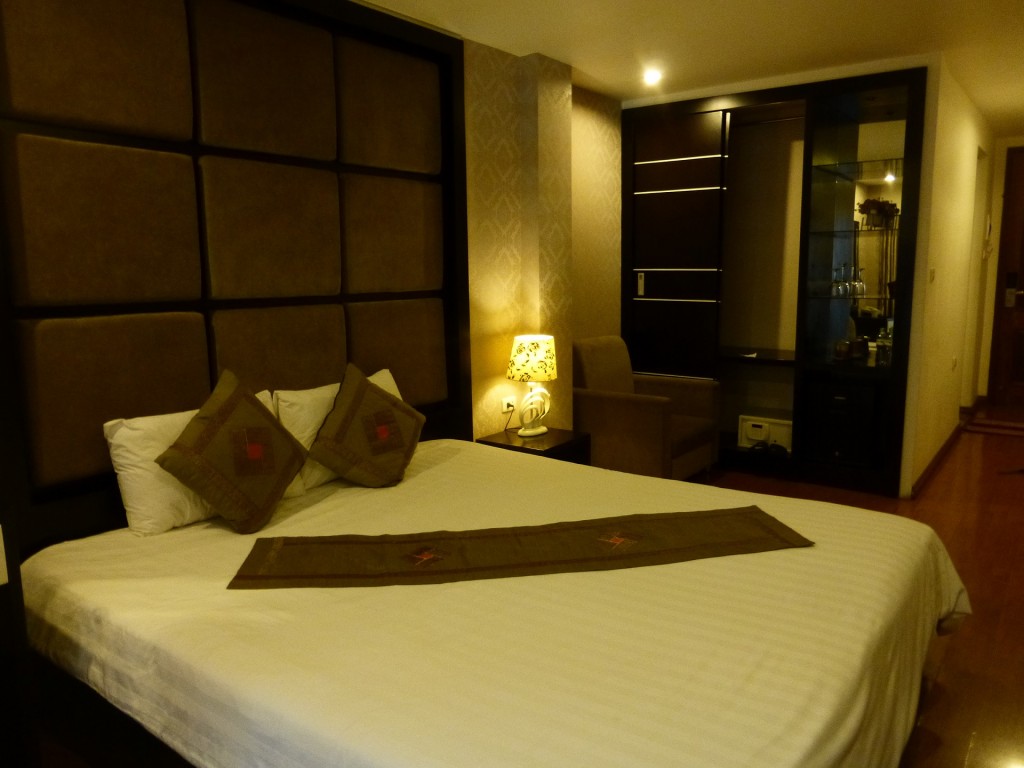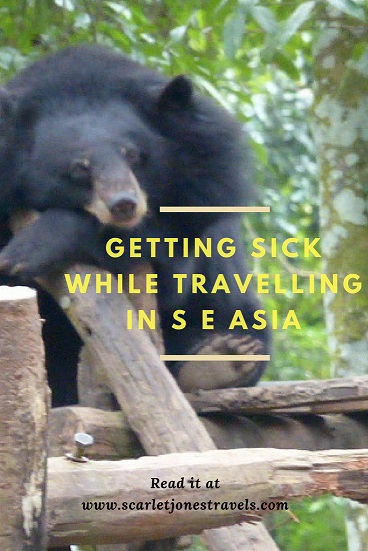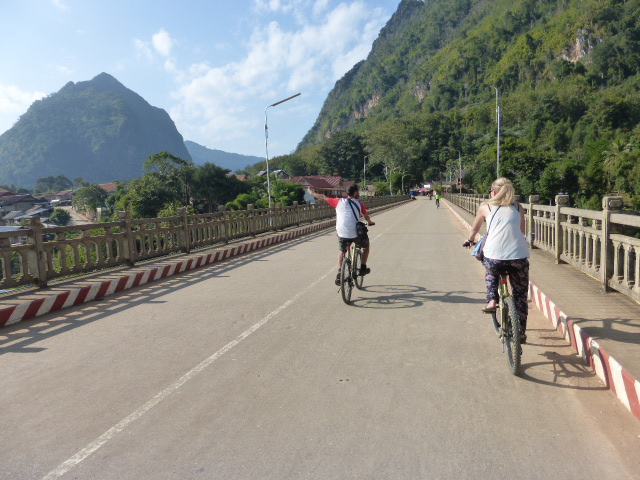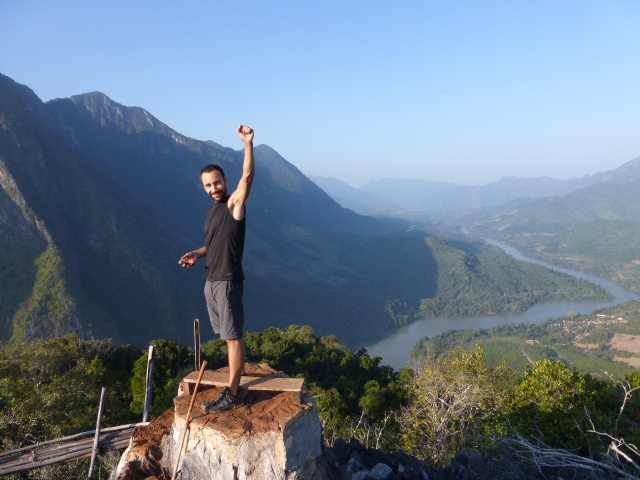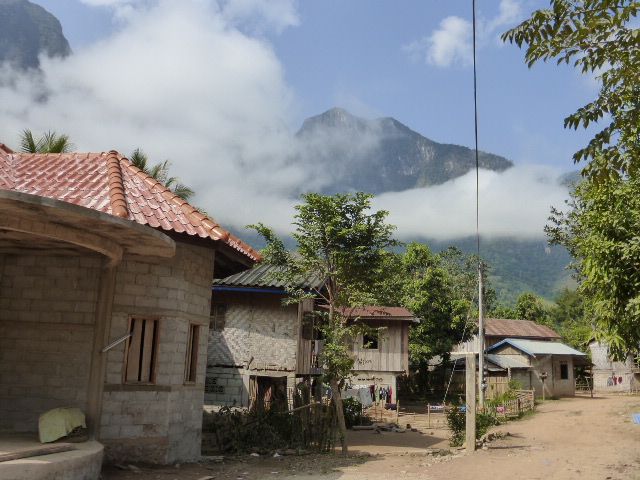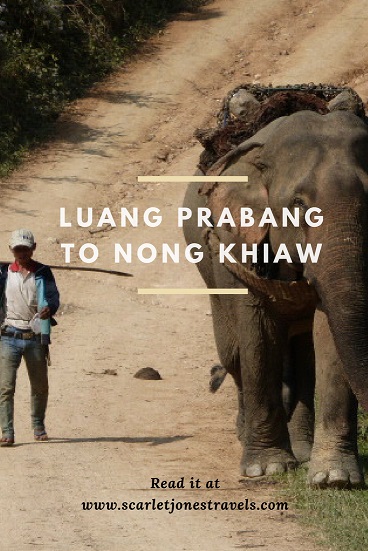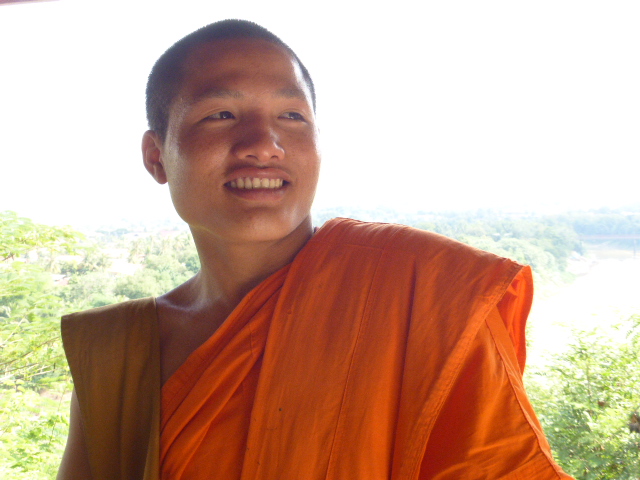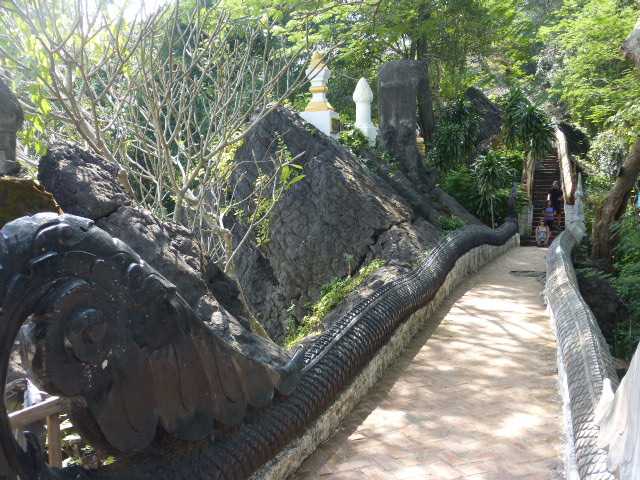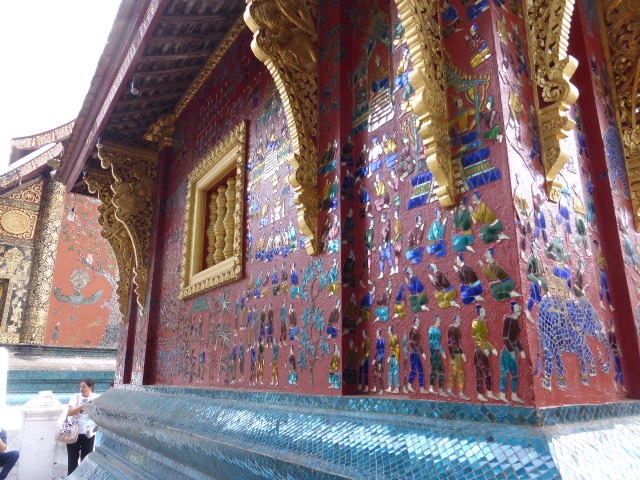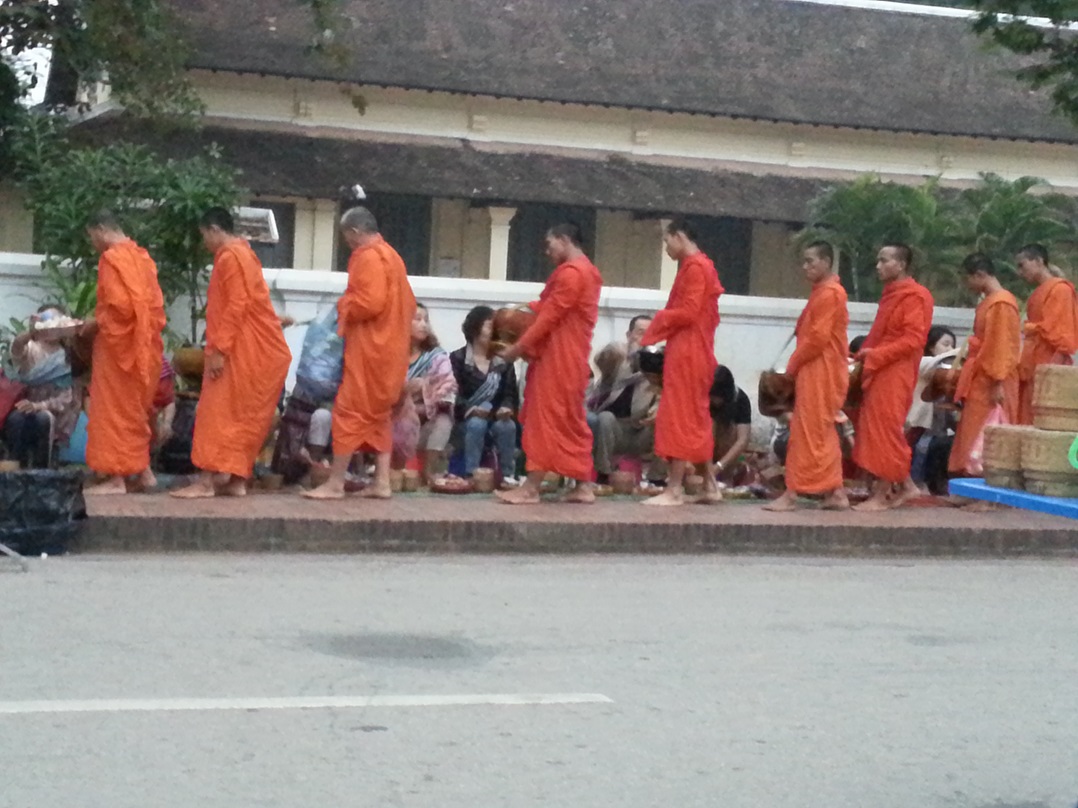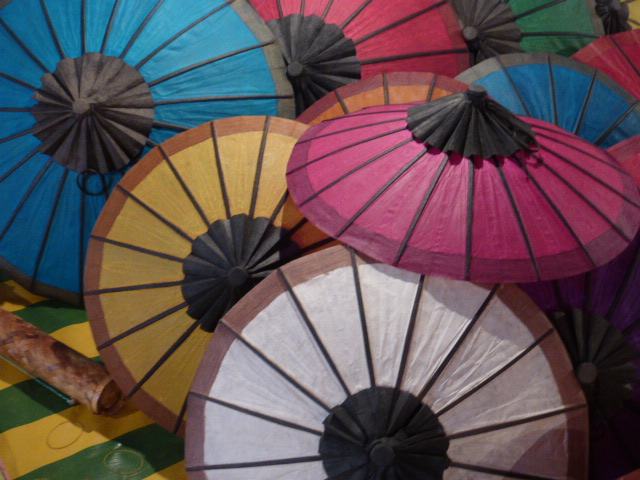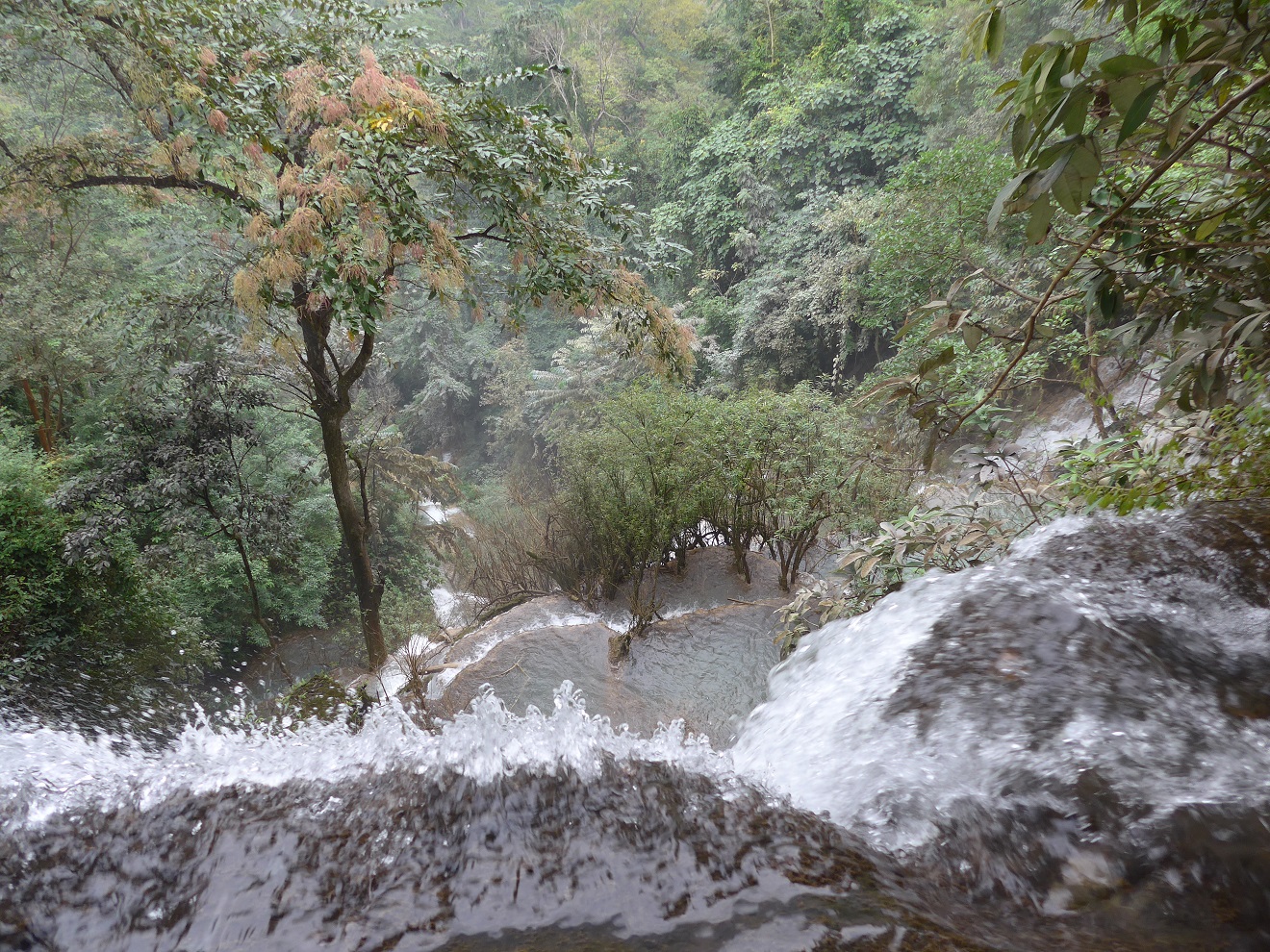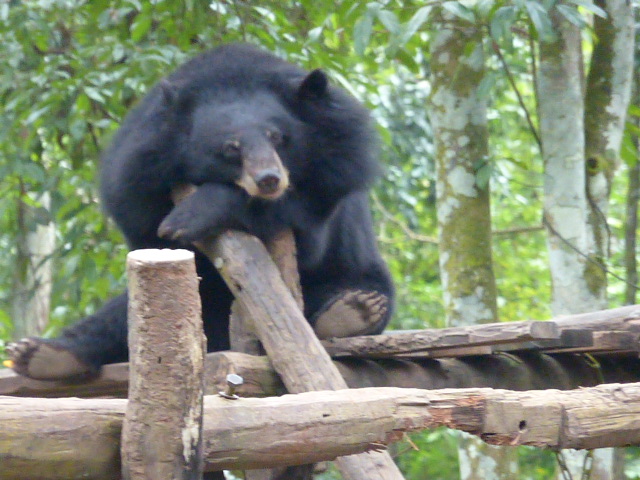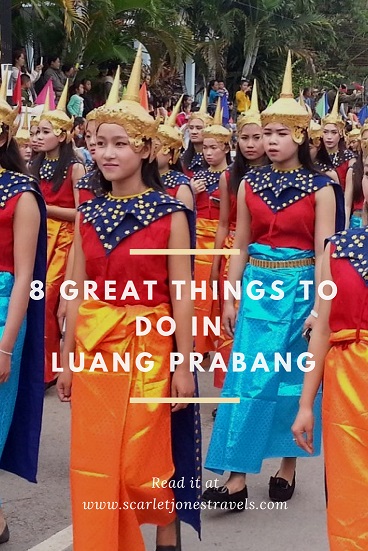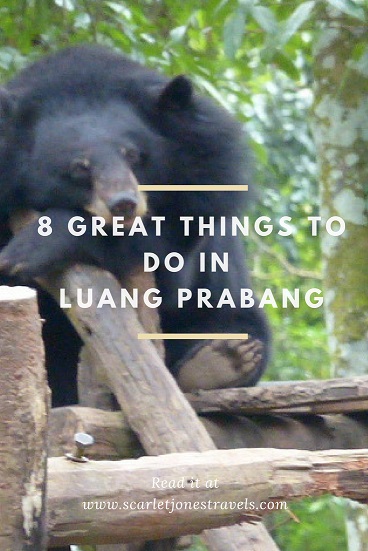
by Jane | Jun 28, 2016 | Asia |
We had crossed the border from Laos and we had travelled by bus to Hue which is a large city near to the coast in the middle of Vietnam. In order to avoid the cold weather we had crossed just where the climate changes and where the country is divided by a range of mountains. We planned to head south from Hue to Danang.
At first, after a month of peace and tranquillity with the down to earth people of Laos it took us quite a while to warm to Vietnam.
Hue
Gosia and I arrived in Hue quite late at night and we were quite overwhelmed by the noise and the chaos that surrounded us as we stepped off the bus. It was like South America all over again as touts and porters tried to grab our bags and insisted that we use their taxis.
After the gentleness of Laos the noise was confusing and disorientating.

Hue to Danang – feeling disorientated after Laos
Neon lights flickered, horns blasted and the fumes from the motorbikes burnt our eyes and throats.
We had a night booked in a hostel and arriving there a party was in full swing. What on earth had we let ourselves in for?
The Perfume River runs through the city of Hue. Some lovely walks through parkland run alongside much of the river. Modern office blocks and hotels rub shoulders with some lovely old houses. Workers in business suits walk past shoe-shine men and traders who squat on the pavements. And there are motor bikes everywhere.
We spent a couple of days in Hue acclimatising to a new language and new customs and window shopping. It seems that everybody in Vietnam is a tailor or a seamstress and whole streets are dedicated to the craft of dressing you beautifully, quickly and cheaply.
The Imperial City and the Citadel
Probably the most impressive attraction in Hue is the Imperial City. This massive complex is sited inside the Citadel – the whole of which is surrounded by walls and a moat. Inside are many areas, including the Purple Forbidden City.

the Imperial City
Building began in 1804 and now the area has a UNESCO status to protect it. While there is an effort to rebuild and renovate the damaged buildings it is sad to know that they were destroyed relatively recently during the Vietnamese/American war when house to house fighting took place in Hue.
I spent a good few hours wandering around the overgrown grounds with my Turkish friend Eray who I had met at the hostel. There are intricate carvings on the doors and roofs and beautiful colours are painted on window shutters and enamel work. Incense burns in large cauldrons and fish swim in ponds, yet in other places piles of rubble lie as testimony to the war.

the Imperial City
The train from Hue to Danang
Despite the ancient city we couldn’t really settle so we decided to head south from Hue to Danang. The guidebooks told us that both the road and the railway journeys from Hue to Danang are quite spectacular and we opted for the train. The books are right – it is a really beautiful train journey.
The tracks soar high up into the mountains and then swoop down towards the coast, passing through jungle and towns and villages. At every single road crossing were men who were controlling the traffic and waving flags and there were even a couple of people stealing a ride on the top of the train carriages.
Danang
We got off the train in Danang and although we had planned to stay here for a couple of nights we soon decided against it once we had finished our coffee in a little cafe. We asked the proprietor to negotiate a cab for us to the small beach town of My Khe which was nicknamed China Beach by the US soldiers who swamped it for R&R during the war.
The beach is basically a suburb of Danang and is not far down the coast and our guide book told us about a not-to-be-missed hostel there. However, when we arrived in to the little town we were told by a vendor that this hostel had been closed down. Suspicious of a scam to divert us to her brother’s hostel our cabbie phoned our planned destination, spoke to the owner and soon deposited us outside a small bar (no hostel) and proceeded to demand triple the agreed fare from us.
So far Vietnam was failing to impress us!
Hoa’s Bar
Hoa is a small man with a huge heart and he welcomed us into his bar, promising us that he would help us to get some cheap accommodation for the night and he assured us that the price quoted by the cab driver was correct and the staff in the coffee shop had been wrong.
Hoa was chatting with a couple of US veterans who had returned to live in the area and had made it their home and over a beer he told us how he had been forced to close his hostel by the authorities who wanted the land for development and he was now running the bar in this new area by the beach.

Hoa and his bar
After a cold beer and time spent with the irrepressible Hoa we began to feel a bit more positive and we arranged to return the following morning for breakfast and then again the following evening for a traditional family dinner which was to be cooked by Hoa’s wife and sister.
Marble Mountain
The town at the foot of the Marble Mountain is VERY strange. The main occupation of just about everybody is sculpturing blocks of marble into statues.
Some of these statues are massive and destined for temples or large hotels; others are small and targeted at tourists from the line of shops which run along the main street. Running the gauntlet of the touts who were determinedly trying to get us into their shops we set off to climb the Marble Mountain.

These statues were huge
Hundreds of stone steps and pathways crisscross up the steep mountain side (there is an elevator some of the way up for the less able). Temples, statues and pagodas are tucked into every little nook and cranny.
Cave complexes spread into the mountain rocks like swiss cheese where you can find hidden grottos and both Hindhu and Buddhist temples. In the pitch black depths of one you climb up a tight squeeze of a funnel and you emerge on the top of the mountain where you have some spectacular views.
As we looked all around we learnt (by eavesdropping on a tour guide) that there used to be five of these large mountains sticking up from the flat plain but they have been decimated by man’s desire for the marble. The government has thankfully called a halt to any more quarrying but the town still chips away at huge blocks of marble which are transported in from other sites which are presumably being destroyed in the same way.

two of the remaining mountains
I also learnt from the same guide that during the war the Vietcong had a hospital on the mountain – in full view of the American air field and the beaches where their enemy troops lazed around and recuperated!
My Khe or China Beach
China Beach is a long side stretch of white sand and I guess in season is thronged with tourists but for now, Gosia and I had it to ourselves, apart from some fishermen who were paddling their small boats around.
I was particularity fascinated by these boats as they are just like the coracles that were on the rivers of Wales in the past. Their roundness and similarity to corks bouncing along on the waves frightened every water hating molecule in my body although the skill of the fishermen had me in awe.

Fishing
The Dragon Bridge, Danang
After a couple of nights at the beach we decided to give Danang another chance and we set off on a local bus for the weekend. After the hospitality of Hoa and his family we were disappointed to have a total dragon of a bus conductor on the local bus – she insisted on charging us double for the journey – we had to pay a fare for our backpacks even though the bus wasn’t full – and then she made us get off the bus a good forty five minutes’ walk from out destination in the drizzle (it seemed that she understood our not so polite comments about her attitude in English!)
Luckily our hostel was nice and clean and breakfast was included but we were still both totally overwhelmed by the traffic in the streets.
Vietnam has a great culture of what I can honestly say is the best coffee in the world (in my opinion) and countless little cafes and coffee shops are on every street corner. Bizarrely you usually sit on tiny little plastic stools all lined up facing the road – but actually this is perfect for traffic watching which is far more exciting than any television programme.
As we set off for the Dragon Bridge that night our receptionist warned us not to stand close to the head of the dragon. Why on earth not? We had made this special trip back to Danang and we wanted a good view from the road not from the banks of the river where the majority of the people were standing.
The police closed off the road bridge and pushed us all back towards the end. This bridge has a large metal dragon snaking its way across the centre which at weekends breaths fire. The head clicked and whirred and then flames began belching from the dragon’s mouth.
In the darkness and the light drizzle it was hot but not unbearable. Our receptionist obviously was erring on the side of caution and Gosia and I were looking forward to finding a club and going out dancing after the fire demonstration. We took pictures and awed and ahhed with the crowd – and then the flames turned to smoke.

The dragon bridge
The dragon was puffing out steam high into the night sky. Then to our horror, the steam condensed when it hit the cold air…….. and it fell to the ground in a torrent! It was as if a million buckets of water had been tipped over us all at once and we were soaked through to the skin!
There was no escape as wave after wave fell heavily onto us and then we simply had to see the funny side and laugh. There was no dancing for us that night as we made our way back to the hostel and dry out our money, our phones and our underwear.
We had seen a wide variety of things from Hue to Danang but now we decided to get a bus further south to Hoi An. Maybe we would like that town better.

by Jane | Jun 8, 2016 | Asia |
New Year on Don Det and the 4000 Islands
Gosia and I met Delia as we were all squashed in a hot tin box of a bus together on our way to Don Det and the 4000 islands. Squatting uncomfortably on child sized plastic seats in the aisle we were soon chatting away and we decided to stick together and celebrate the New Year in style.
[grwebform url=”https://app.getresponse.com/view_webform_v2.js?u=spPd&webforms_id=13182401″ css=”on” center=”off” center_margin=”200″/]
If you are already travelling in S E Asia and need a guide book, don’t forget that you can get Lonely Planet guide books in electronic format as e-books Click here for the latest offers and prices
I was really stepping outside of my comfort zone by being around all this water and the boats but I wouldn’t have missed this part of Laos for the world.
You don’t have to go as far as Laos to challenge yourself but if you would like to find out what you are capable of, then take a look at this link and see what the The Smash the Pumpkin Project can offer you.
Andn case you don’t get to Don Det and the 4000 islands, you can live vicariously through my eyes in this article.
The 4000 Islands lie at the bottom tip of Laos and they share this section of the Mekong River with Cambodia.

One of Don Det’s famous sunsets
Many of the islands are little more than lumps of rock with a couple of trees growing on them but others have a well developed tourist industry and they support a population who get on with their lives as they have done for generations.
We were on our way to Don Det – not to be confused with Don Dhet. Don Det is one of the smaller islands with a focus on budget and backpacker travellers and we had heard that it had a relaxed vibe.
Arriving on Don Det in the 4000 islands
We first had to take a ferry ride over to the island’s sandy beach. Our rucksacks were all piled at the front of the boat and the passengers were warned not to move once we were seated or the boat would tip over – and then thankfully quite quickly we were landed on the hot sand over on the island.

Arriving at Don Det
There are a couple of brick built hotels on Don Det but the majority of the accommodation is in wooden cabins or bungalows. Many of these are built on land which has been in families for generations and they now cater to the increasing influx of travellers.

our home on Don Det
You can choose to stay on either the sunrise or the sunset side of the island – although don’t worry too much because, especially at the pointy bit, it is literally a three minute walk across to the other side.
Most of the bungalow groups have river-side settings, many have restaurants on decking which hang over the water and nearly all are completely laid back, chilled and relaxing. – Click here for up-to-date prices for accomodation from Agoda on Don Det

view from our balcony
Things to do on Don Det
We hired some bicycles and we spent a day touring the length of the island, crossing over the old stone bridge to the even smaller island of Don Khone (which is not to be confused with Don Khong).

Chilling on the bridge
The centre of both islands is given over to rice fields, those cute little Laotian brown cows with their magnificent eyelashes, fruit plantations and vegetable gardens.
The main attraction on the island of Don Khone are the spectacular Somphamit Li Phi waterfalls.

The Mekong
At one point on the side of Don Khone, the normally sedate river Mekong is forced to tumble through chasms and down the rocky river bed. From our vantage point we stood for ages watching the water roar and pour its way angrily southwards.
The local fishermen spread their nets and fishing traps in the rapids and anybody wanting to tube up the river around Don Det is warned to get out of the river long before this point or risk getting swept down to Cambodia.
Where the river settles down again it widens out and you can see across to Cambodia. Here you can see why the area is known as the 4000 Islands, and it is here at this point that you may have the opportunity to watch the increasingly rare Irawaddy dolphins.

Stopping to chat to a local man
Organised boat trips are available from the agents in the little town, but you can arrange one yourself and here at the southern-most tip is where you can bargain for a local guide to motor you out to the ‘pool’ where the dolphins like to chill during the day.
We almost hired a boat – it was cheap enough – but people coming in told us that it was the wrong time of the day to see the dolphins doing anything but lying on the surface and it was all a bit sad.
The boats generally keep a respectful distance from the animals – but we didn’t really want to cause them any undue stress so we declined to go out.

bathtime
Party Central
We had come to Don Det knowing that it generally catered to the backpacker brigade and we were hoping to catch a few parties. It was New Year after all and a beach party was advertised.
There was only one small beach on the island – where the boats from the mainland come in – and there was to be music, dancing, drinking and celebrations.
We wandered down and picked our spot on the sand. Clusters of people were quietly chatting and drinking and music was played over some loudspeakers by a group of teenagers.
Unfortunately they didn’t seem able to be able to agree to anything and they kept cutting tunes off halfway through or switching from dance and trance to folk music as they argued. So the dancing never really got off the ground and anyway the majority of people were just too chilled to even think about standing up or moving in any way.
Midnight struck – or somebody shouted that it had, and we did all jump to our feet to hug and kiss friends. A few intrepid men stripped naked and ran screaming and shouting into the water, only to be quickly ordered out again by police who were paranoid about yet another tourist drowning in paradise.

Don Det and 4000 Islands
We were now into 2016 and we were given the nod about another fantastic party that would be taking place far away from prying eyes.
We wandered down the sandy track into the dark and into the interior of the island. The stars here were wonderful as there was no light pollution and we found a bunch of people cooking and eating pizzas. We made ours up and popped them into the makeshift oven and waited for the party to get going.
Like just about everything else on the island it was all too much effort and a little bit disappointed that we still wouldn’t be able to party we left. We heard that the party never actually did get going but we went back to one of the bars and we had a few cocktails.

more chillin’
You can get hold of drugs everywhere in Laos and especially in the tourist areas, although I wouldn’t recommend you do take them because the penalties are very high if you are caught in possession of them.
We had only just arrived on the slow boat from Thailand to Laos when were offered weed and/or opium and here on Don Det island weed was freely smoked in certain of the bars and some of them advertised ‘happy’ pizzas or ‘happy‘ shakes.
Maybe this contributed to the relaxed atmosphere, maybe it was the hot weather or the decks lined with floor cushions and where nobody objected if you lazed around all day, but whatever the reason, the 4000 Islands is the perfect place to kick back and unwind.

Don Det and 4000 Islands
We would wander a little bit, occasionally cycle around if it wasn’t too much effort, lounge around and chat or sit on the decks and we would watch the sunsets across the water.
I do think that I should travel with a hammock so that I can sling one anywhere and create my own little bit of paradise – Amazon sell a selection – and whilst not pretty, this one should do the trick – [easyazon_link identifier=”B01F57SZYK” locale=”UK” tag=”scajonblo0e-21″]click here for the link to Amazon[/easyazon_link]

sunset on Don Det
Laos – to sum up
Gosia and I had been in Laos for the thirty days which was the amount that was permitted on our tourist visa and sadly it was now time to leave.
We had travelled from the north-west where Laos borders Thailand and we had spent time in the UNESCO World Heritage Award winning town of Luang Prabang.
I had climbed a mountain in Nong Khiaw with a Catalan and got very sick in the north-east. We had to abandon our plans to go across to the cave system close to the Vietnamese border due to the freezing cold weather, the rain, the mud and my stomach.
We` had been privileged to be a part of the Hmong New Year festivities and we had witnessed their courtship rituals and we had found out about the shocking legacy of the ‘Secret War’.
I had tubed down the river in Vang Vieng and we spent Christmas Day dining on fish on the same river as it flowed through the dusty sleepy capital Vientiane.
We fell in love with Champasak and we totally relaxed on Don Det on the 4000 Islands.

catching supper on Don Det
We didn’t have time to do any of the classic motorbike routes through what I have heard is beautiful unadulterated mountains but we did see rescued bears, waterfalls and millions of wooden houses where people live as they have lived for generations.
Can you see the link which runs through this article and binds all of these places, and Laos together?
It is the River Mekong. It forms the border for much of Laos with Thailand and later Cambodia and the main cities are all sited along its banks. It is always wide and it usually flows calmly and it breathes life into this magical country.

the river Mekong
It provides food, irrigation and a means of transport. It provides hydro-electric power. It is the life blood of Laos.
Much of Laos is underdeveloped and is still covered in jungle and forests and the Laos people are gentle, softly spoken and extremely shy.

the people are all beautiful
The nation is immensely poor and it is stuck in poverty partly because of the Secret War. The women are very beautiful, the food is generally simple and the countryside goes on for miles and miles.
If you are reading this and wondering whether it is worth a visit – YES it is.
Do go.
Do not be confrontational and do speak gently.
Be prepared to witness entire busloads of Lao vomiting into plastic bags because they all get travel sick and please don’t eat anything from a roadside cafe in the mountains that looks and smells like road-kill!
Gosia and I were unable to leave Laos without a nightmare thirty six hour journey.
I had a panicky couple of minutes when I thought that I was being kidnapped and we got stuck for the night in a town where packs of feral dogs reigned after dark, but we finally left the peace and quiet and the gentleness of Laos for Vietnam.
Boy, were we in for a shock!
I have mentioned the books of [easyazon_link identifier=”1849165181″ locale=”UK” tag=”scajonblo0e-21″]Colin Cotterill[/easyazon_link] in previous posts but he really does write beautifully and describes the countryside, the people and the traditions of Laos so well. You can see some of his books in the Dr Siri series here
[easyazon_infoblock align=”none” identifier=”1849165181″ locale=”UK” tag=”scajonblo0e-21″]
Sign up here (fill in the details in the box on my home page) so that you don’t miss my soon to be released articles about Vietnam and you can find out whether I loved or hated that country, and please, please, please DO NOT travel without decent insurance – I use Alpha Travel Insurance – you can get your free quote here
To accompany this series of articles on Laos, I have published a comprehensive 28 page travel itinerary of my month-long route around Laos. Simply enter your details in the box below to get your free guide.
[grwebform url=”https://app.getresponse.com/view_webform_v2.js?u=spPd&webforms_id=13109801″ css=”on” center=”off” center_margin=”200″/]
And if you simply want to follow me and not receive the comprehensive Laos guide you can enter your details here
[grwebform url=”https://app.getresponse.com/view_webform_v2.js?u=spPd&webforms_id=13127101″ css=”on” center=”off” center_margin=”200″/]

Pin and share this post

Share and pin this post to read later
This post contains affiliate links and/or references to our advertisers. We may receive compensation when you click on or make a purchase using these links.
Scarlet Jones Travels is a participant in the Amazon Services LLC Associates Program, an affiliate advertising program designed to provide a means for sites to earn advertising fees by advertising and linking to Amazon.com.

by Jane | Jun 1, 2016 | Asia |
We had a dilemma! Gosia and I were planning to spend New Year in the 4000 Islands in the far south of Laos, but the question was, should we break our journey and go and see the Champasak shadow puppets?
[grwebform url=”https://app.getresponse.com/view_webform_v2.js?u=spPd&webforms_id=13182401″ css=”on” center=”off” center_margin=”200″/]
Champasak sounded like a tiny one street town (it was), with few guesthouses (true) and not many tourist attractions (correct), so should we press the pause button for a few days or continue to Laos?

on the way to Champasak: nobody is around
We flipped a coin and it came up as a yes. Since I started travelling I have allowed myself to trust in fate more and more and as a result my self-confidence has been growing – to such an extent that I now coach others.
As the bus driver pulled up alongside a deserted beach on the banks of the river Mekong and dumped us out onto the sand we began to wonder about trusting our luck to a toss of a coin when there was no visible means of a crossing in sight.
After a thirty minute wait, some floating planks (a ferry) eventually approached and we were taken across to Champasak.

Champasak: the ‘ferry’
Champasak: the village
It’s stretching it a bit to call Champasak a town as it is just a couple of streets. They are however very long and lined with little ‘shops’ which all sell the same noodles, crisps and sweets and drinks with not a lot else.
The budget accommodation mostly consists of various little wooden cabins. They are usually grouped around leafy gardens and with dining areas suspended over the Mekong on wooden decks. Most offer breakfast or lunch time snack and nearly all are quiet, calm and peaceful.

breakfast in Champasak
There are a few choices of small places to eat and just at the edge of the village is a neat place – the Nakorn cafe and restaurant – where you can get really decent coffee and food and is run by a Belgium man called Jacques and his wife.
The Champasak shadow puppets.
The Champasak shadow puppet theatre was the main reason that Gosia and I had wanted to stop in this tiny town and we were certainly not disappointed.

Champasak: shadow puppets
Drinking coffee and Thai iced milk tea in the Nakorn coffee shop we met Yves Bernard, the director and the man who had brought the old puppets and the theatre back to life through his project the Theatre de Ombres de Champasak ATOC.
The theatre had ‘disappeared’ in 1975 but six years ago the puppets were discovered in the back of an old temple.
Yves who is originally from France came to stay and helped the local people to dust off their puppets, get out their instruments and revitalise this ancient art.

after the show – demonstrating the puppets
You have a choice of two shows – depending on the day of the week that you are in town.
- The tale of Phralak-Phralam: the Lum Siphandon song which you can see on a Tuesday and Friday or
- Cinema Tuk-tuk: Chang, once upon a time in the jungle. This is Cooper and Scoedsack’s black and white movie about everyday life in North Laos in the 1920s and set to live music on a Wednesday and Saturday
We paid our small entrance fee and we went in to watch the tale of Phralak-Phralam. As we chose our places on the colourful raffia mats and the floor cushions one of those big fat, blood red full moons rose alongside us above the river Mekong, the crickets chirruped and the sky was dusted with brilliant stars.
The ‘theatre’ was outdoors under a canopy of trees where the scents of night jasmine and frangipani mingled with the sweet smell of sandalwood from the village cooking fires.
Local children had free access to all of the shows and a small group of them shoved and giggled on the benches at the side of the little arena while the small audience of just 24 settled down and got comfortable.
The troupe of 13 musicians joined us and sat together cross legged, smoking and laughing while they tuned up their traditional instruments.
Yves Bernard stood and outlined the storyline to us in his native French and halting English.

the musicians start to tune up
I got a little bit confused and once the play started I got hopelessly lost but it didn’t matter: it was magical!
The music the puppets, the narration in Lao, the stunning setting – it all combined into one of those truly never-to-be-fogotten experiences.
Yet it was all so simple.
A sheet strung between some trees and a few spotlights; actors working their puppets on sticks; the musicians who were having a fine old time and a chilled audience sprawling on the floor.
We could have been any group of people from any time in the previous two hundred years spending a summer evening together.
After the show Yves explained how the musicians were all local men who got on with their normal lives during the day time.
Allegedly, the best musician in the South of Laos is a blind man and he plays in this orchestra. Another of the men regularily rises at 4am to take 40 ducks on the back of his motorbike to sell in Pakse market, the director of the project works at the temple and one man is a hairdresser operating out of his garage.
These were physically tough men – hard and wiry with muscles from a life time of hard work and with skin and teeth which glittered under the full moon.
They played the most intricate and traditional Laotian instruments and together they transported us to another realm for the duration of the show.
If you have read some of my other articles about Laos, you will remember that I have told you about the author Colin Cotterill.
One of his books – [easyazon_link identifier=”184916519X” locale=”UK” tag=”scajonblo0e-21″]Thirty Three Teeth[/easyazon_link] – includes a story-line about superstitions in Laos (well most of his books do because the Lao tend to be superstitious people).
Colin’s books are well worth a read and are written with beatifully descriptive language and humour and as a bonus the royalties from his sales are distributed to good causes within Laos.
GO TO CHAMPASAK!!
To accompany this series of articles on Laos, I have published a comprehensive 28 page travel itinerary of my month-long route around Laos. Simply enter your details in the box below to get your free guide.
[grwebform url=”https://app.getresponse.com/view_webform_v2.js?u=spPd&webforms_id=13109801″ css=”on” center=”off” center_margin=”200″/]
Vat Phou – some ancient Khmer culture
The day following the Champasak shadow puppets, Gosia and I hired bicycles and foolishly headed off under the mid-day sun. We cycled along the road for about an hour, passing clusters of the cutest Laotian cows and we were overtaken by farmers driving their strange two wheeled tractors known as Iron Buffalos or Tak-taks while people worked in the paddy fields, farming by hand or with buffalo.

iron buffalo
Expecting a bunch of ruins and temples similar to all of the others that we had seen we were amazed by Vat Phou (the name is often Westernised into Wat Pho)
We were yet to visit Siem Reap but this temple in Laos which was built between the 7th and 12th century is an offshoot of that ancient Khmer complex.
Pronounced ‘wat poo’ this temple is built into the side of a sacred mountain and is accessed by a scramble of steep, stone, lichen covered steps.
At the base of the mountain are two large reservoirs of water and everywhere there are large stones and columns from collapsed buildings.

Champasak: Vat Phou
Wandering around the remaining standing buildings in the silence that accompanies the hottest part of the day I could feel the energy crackling around me and I could fully understand why the Khmer chose to build their temple here.
Hauling ourselves up this stairway to heaven we passed under a corridor of fragrant frangipani trees. The view across the plain below was uninterrupted rural-ness and an aura of peace and serenity bathed this spiritual place. You could feel the energy seeping into your body and mind.

Champasak: Champasak: Vat Phou
We wandered among the large boulders which crowded the land at the back of the shrine and we found the rock believed to have been a sacrificial altar. There were also rocks carved with crocodiles and other creatures.
We sat quietly and looked down over the plain and we saw how the holy water ran around and through the shrines to Buddha, cleansing and purifying as it flowed.
This temple complex is yet another reason why you shouldn’t by-pass this tiny town.
VISIT CHAMPASAK
Forgotten palaces
We extended our stay in our little wooden cabin (shed) for a further night and taking to our bicycles we followed the river. We rode through small indigenous communities where life is still lived almost exactly as it has been lived for years.

Champasak
Dilapidated wooden houses on crooked stilts cluster around the river edge, and whole families hung and swung in their hammocks in the shade or dozed on the cots (bamboo platforms) which were outside every home.
Smoke lazily rose from the charcoal and wood cooking fires and little children shouted ‘hello’ and ‘goodbye’ to us as we passed.
Dodging chickens and sleeping dogs we pedalled along the overgrown path by the river until we came to a couple of grand houses.
These were once the summer palaces of the King of Champasak but they had long since been abandoned. Monks had adopted the grounds and some of the buildings into one of their temples, but the grand facades are slowly decaying and crumbling as nature claims them back for her own.
Despite wandering miles from anywhere among the jungle paths and small hamlets of inquisitive people we never felt unsafe or worried. The Lao are a beautiful gentle people.
STAY A WHILE IN CHAMPASAK. Allow her to weave her magic around you too.
What interests you? What would you like to learn more about?
The Smash the Pumpkin Project shows you how you can explore new things and integrate them into your life. You will engage with a series of personal challenges that will guide you to more self-confidence and self esteem while you follow your dreams and passions.
If theatre or performance lights your fire, shadow puppets are an amazing art form to explore. You don’t need to go all the way to Laos – but who knows. Why not!
Click on the button below to find out more about the project
Smash the Pumpkin
Don’t miss out on future articles from Scarlet Jones Travels. Sign up via the home page and receive future posts direct to your inbox – find the home page here
[grwebform url=”https://app.getresponse.com/view_webform_v2.js?u=spPd&webforms_id=13127101″ css=”on” center=”off” center_margin=”200″/]

Pin this post

Pin and save this post for later
Disclaimers:
Scarlet Jones Travels is a participant in the Amazon Services LLC Associates Program, an affiliate advertising program designed to provide a means for sites to earn advertising fees by advertising and linking to Amazon.com
This post contains affiliate links and/or references to our advertisers. We may receive compensation when you click on or make a purchase using these links

by Jane | Apr 26, 2016 | Asia, Hostels, Personal stories |
I have to admit, I’ve been lucky up until now with getting sick while travelling, but since I have been in S E Asia I have had all sorts of stomach bugs and viruses.
[grwebform url=”https://app.getresponse.com/view_webform_v2.js?u=spPd&webforms_id=13182401″ css=”on” center=”off” center_margin=”200″/]
During one whole year in South America my only problems were suffering from altitude sickness and getting myself a nasty little parasite after I drank untreated well water in Colombia.
I had a couple of snotty sneezy colds while I was travelling through the Baltics and I twisted my knee on a hike up a mountain in Spain.
Make sure that you don’t miss any of my future articles by signing up in the box below (don’t worry, it’s easy to unsubscribe in the future if you find that you don’t have time to read them!)
[grwebform url=”https://app.getresponse.com/view_webform_v2.js?u=spPd&webforms_id=13127101″ css=”on” center=”off” center_margin=”200″/]
I don’t count the coma-induced hangovers due to over-indulging on pisco, rum or that sneaky-killer aguardiente. They are just part and parcel of never growing up but it’s been a different story recently and I keep getting sick while travelling in SE Asia.
But now, here in South East Asia I have been getting sick in every country that I have visited (to date).
If you take one thing away from this article it should be to NEVER travel without decent travel insurance. It doesn’t have to be expensive but it could save a whole host of problems and expense further down the line. I use the long stay package from Alpha Travel Insurance you can get your own up-to-date quote here.
Stomach bugs, viruses and bronchitis
Thailand – I got a stomach bug in Chiang Mai that kept me close to a bathroom for 3 days (probably caught from my landlord who had the same). Delhi Belly, Montezuma’s Revenge, call it what you will, I was up and down the stairs to the (shared) bathroom like a yoyo.
Laos – After eating just a couple of spoonfuls of suspicious smelling food in the northern mountains of Laos I got sick.
Immediately following this dodgy meal we spent three long travel days on crowded minivans which threw us from side to side on the hairpin bends in the mountains int he norht of Laos, driven by evil drivers who would stop on open lay-bys with not even a small shrub for cover for communal toilet breaks.

getting sick while travelling – this is where I got food poisoning
At this stage I was beyond caring and I would tramp over to the nearest patch of grass with my toilet roll and squat like the locals in full sight of everybody. I simply wanted to give up and sleep.
I eventually presented myself at the hospital in Laos where tests proved that I needed (more) antibiotics along with a traditional Chinese medicine.

Cambodia – I contracted a 24 hour stomach bug on the island of Koh Rong. Many others were sick before and after me but at least I was better before we got to our home-stay in the Cardamom Mountains with its very basic bathroom that was simply a hole in the floor flushed with water from a jug.
My friend Debs wasn’t quite so lucky because she was sick here and had to use this whole in the ground -but she did learn a new skill – and I quote: ‘I can now shit with precision through a hole in a polo!’
Vietnam – I loved the city of Hanoi but the weather was cold and damp and the city was VERY polluted. EVERYBODY in the city had a cough and in our 8-bed dorm all of the occupants were laid low with a variety of ailments.
I think I had the flu because for over a week I felt as if I had been trampled by a herd of water buffalo where every movement was agony and my lower back was on fire. When I did get upright for long enough to get outside there were several occasions where I went white as a sheet and everything went woozy and I came very close to fainting.
Here in Hanoi my cough then escalated to bronchitis and for the first time ever, I began to dream of having my own home and a nice little place where I could escape and pamper myself.

I loved Laos – but it was so cold in the north
Thailand (again) – this one was probably my fault for eating street food late at night when the vendors were packing up for the evening and things had been hanging around for too long. It did make for an interesting travel day flying from Krabi to Bangkok vomiting my way north. Thank goodness NOK Air supply plenty of strong sick bags.
To accompany this series of articles on Laos, I have published a comprehensive 28 page travel itinerary of my month-long route around Laos. Simply enter your details in the box below to get your free guide.
[grwebform url=”https://app.getresponse.com/view_webform_v2.js?u=spPd&webforms_id=13109801″ css=”on” center=”off” center_margin=”200″/]
Look after yourself.
‘Stay healthy,’ they all say. ‘Look after yourself,’ and ‘you don’t want to go getting sick while travelling,’ is what every traveller is told before setting out.
It goes without saying that you shouldn’t take ice with your drinks (I do), you never drink the tap water (I do) and you don’t eat from street food vendors (I do). You peel all fruit, you don’t eat vegetables (a source of e-coli) and you avoid meat (refrigeration difficulties).
Certainly never drink the local home-brewed firewater at weddings in Vietnam, do not hire a scooter and certainly never get on the back of a motor bike taxi in Bangkok during rush hour without a helmet. Yes, right!!!!!
I break every one of these rules regularly and as I have already said, I lasted the entire year in South America with few ill effects.
I have some rules. I don’t balance on balcony railings, I would never bungee jump and I don’t knowingly eat road-kill (I suspect that was the problem in the mountains in Laos). I weigh up the risks and I take preventative actions accordingly.
Always carry toilet paper, wear a skirt on the buses (better to squat in public without baring your bum) and get yourself some little brown pills called berberine ( a herbal Chinese medicine that I swear are magic).

One welcome side effect of all of this was that I lost over a stone in weight and in an effort to rebuild myself I began to focus more on practising my limited capabilities of yoga and meditation.
When I was in Chiang Mai I made a huge effort to get up early some mornings and I joined Nathan from Fit Living Lifestyle and some other travel bloggers who were in town for circuits in the park. You can actually invite Nathan into your home as he has a whole series of online fitness plans for you to choose from so it doesn’t matter where in the world you are if you want his help to get healthy. Check out Nathan’s website here if you never seem to be able to find the time to get to the gym or to a class and see what he can offer you.
My experiences have led me to ponder on the topic of what to do if you do get ill on the road.
Dealing with getting sick while travelling.
Luckily I was never so sick that I needed hospitalization (the doctors in Laos were amazing but the ward was nothing more than a room with mattresses pushed together) and here in S E Asia I have mostly been travelling with friends who have supported me.
If I were solo I would have coped but I would have been 500 times more miserable than I was.
I was alone in Chiang Mai but there was a support network of bloggers and digital nomads in the town who offered to help. It was comforting to know that they were there should I need them.
A hostel would always (I hope) keep hold of your bag and personal belongings if anything really serious happened and you needed to be hospitalized, but as someone who occasionally keels over and faints, the worry is what happens if you are out on your own or travelling with all of your bags!
My full respect goes out to my friend Martin who travels with epilepsy and who does keel over occasionally.
The travel community is amazing and usually pulls together. Take the incidence in Chiang Mai when a traveller had a serious scooter accident and the call went out for blood supplies.
Lots of my friends queued up at the hospital to donate their blood. Here in Thailand, if you need a blood transfusion your relatives or friends have to reimburse the hospital with an equal amount of blood in donations so offers like this are always welcome.
When I was sick in Laos where very few people spoke English a Vietnamese doctor happened to be on the same minivan as me and my friend.
A little way through one of our nightmare journeys he realised that I was sick and he took it upon himself to keep an eye on me for the next few days in Vang Vieng. He offered to accompany me to the hospital in case I had any problems and he checked all of the drugs that I was prescribed, confirming them to be safe and I was very happy to be able to buy him a thank you drink when I got to Hanoi a few months later.
Living in a dorm and coping with sickness when travelling can be a double edged sword.
When you have hacking bronchitis you are very aware of disturbing your fellow travellers and if you have a vomiting or tummy bug you will find that you are constantly keeping a check on whether the toilet is occupied or not. Those are the days when it is more sensible to opt for a bottom bunk for a quick exit.
But when you are sick, there is something very comforting about having people, even strangers, around you and all but the hardest individual will invariably check up on you, running to the pharmacist or bringing you food and drink supplies.
Ask your dorm buddies to fetch you a bottle of cola and loosen the lid so that it loses its fizz. Flat coke works wonders for most types of sickness. Add the contents of a rehydration sachet to your [easyazon_link identifier=”B01F3P14YW” locale=”UK” tag=”scajonblo0e-21″]water bottle[/easyazon_link] and drink as much as you can keep down. If you have the squits ( I can’t spell diarreah) avoid taking anything which stop you going to the toilet unless you have a travel day – you want that shit (excuse the pun) out of your body asap.
And never ever never travel without Travel Insurance. (Travel Insurance is available from Alpha Travel Insurance as well as from other insurance companies)
If you are dealing with sickness while travelling and your finances allow, consider an upgrade to a private room. I was so lucky in Hanoi that I had interviewed Rezma before I got sick and she offered me a free stay in one of her amazing rooms in her bohemian hostel ‘See you at Lily’s’.
The timing was perfect. I staggered out of my 8 bedded dorm in my previous hostel in search of my comfort food of choice – of course a pizza – which I washed down with a reviving cup of zingy ginger tea. I then checked into my private room at ‘See you at Lily’s’ where I snuggled up under a thick duvet in a 6 foot wide bed with air con and a huge flat screen TV and I indulged myself with films late into the night.

See you at Lily’s hostel
Before Rezma and her business partners took over their hostel, the building was a hotel, so while it is now a hostel complete with dorm rooms, free breakfast and really great art work all over the place, they retained some of the private rooms as, well, private rooms.
I could write so much more about getting sick while travelling – especially in SE Asia, but I will leave you here for now. Don’t forget to check out Nathan’s website and if you are planning to visit Hanoi you should certainly visit Rezma and her team at ‘See you at Lily’s‘.
Of course, if you are very nervous about travelling solo then you can always opt for a small group activity holiday. With these you will have a tour guide who can iron out any problems as they occur and liaise with you and the medical professions. I was so glad that I was travelling with Explore when I went in India. I got dysentry and heat stroke which could have turned very serious had our guide not acted quickly when he did. Take a look at Explore’s destinations – I bet that they will go whereever you want to go

Feel free to share this article with anybody that you know who is travelling or may be thinking of travelling – it could save them some bad moments – but remember, I travelled for one whole year in South America and I had very few problems. Maybe I am just getting complacent.

Disclaimer: If you click on some of the links in my articles and purchase something I may earn a small amount of commission. This doesn’t affect the price that you will pay, but I can treat myself to a nice cup of coffee.
Scarlet Jones Travels is a participant in the Amazon Services LLC Associates Program, an affiliate advertising program designed to provide a means for sites to earn advertising fees by advertising and linking to Amazon.com

Pin this post so that you can find it easily later

by Jane | Apr 19, 2016 | Asia, Hostels |
After nearly a week in Luang Prabang we decided that it was time to move on. I was heading north into the mountains, together with my Polish friend Gosia and Marc from Catalunya.
[grwebform url=”https://app.getresponse.com/view_webform_v2.js?u=spPd&webforms_id=13182401″ css=”on” center=”off” center_margin=”200″/]
Simply getting there was eventful. The three of us were split up between a pair of minibuses and the backpacks strapped to the roof, then my driver decided to race everything else on the road, skidding around corners as I buried my head in a book and hoping that I wasn’t about to die (thanking the stars that I had travel insurance) …and then I had over an hour’s wait for the others at Nong Khiaw.

I spent my time watching the tuk-tuk drivers play boules in the field in front of the bus station whilst staring at the limestone mountains which towered overhead until Gosia and Marc finally caught up with me and we hiked the twenty minutes along the dusty lane and into the tiny town of Nong Kiaow.
This town (also called Muang Ngoi Mai) is REALLY sleepy. The main road crosses the river via a stone bridge which for 75% of the day has absolutely no traffic on it. A bevy of ‘restaurants’ cluster at one end of the bridge and little wooden cabins nestle among the trees on the riverbanks.
We knew that there was just one backpacker hostel in town and that beds were allocated on a first come first served basis so before looking at any of the log cabins we checked out Delilah’s. We struck gold as Delilah’s Hostel truly is a slice of home and there were just three beds left in the cosy dorm which we quickly claimed for our own. If you have missed out on Delilah’s check out other accomodation here at Agoda
Spectacular mountains
After checking in, Marc and I set off to climb a mountain. It took us almost an hour of very steep, hot and sweaty uphill climbing but boy was it worth it. We arrived at the lookout point an hour and a half before sunset.
We sat and cooled down on the little platform at the top and then we clambered around on the peak with the other travellers who had made it up there; whilst the sky turned to a delicate shade of apricot and the river changed colour to a romantic smoky blue far below us.
After coming down the mountain safely just before dark we were delighted to discover that they serve Amazing (with a capital ‘A’) cakes and desserts at Delilah’s. They also do rather good coffee too. Whilst there are plenty of places to stay in Nong Khiaw, Delilah’s is really the only place if you want to go anywhere social and it has does have a lovely atmosphere.
Delilah’s in Nong Khiaw
As I have already mentioned the desserts are always popular and the little wooden tables outside usually have plenty of people gathered around chatting; while inside big squoosy floor cushions and mats invite you to relax. A DVD is shown each evening on the TV (the social area is open and very popular with non-residents) and it has a wood burner for the colder nights and plenty of beer to drink.
The dorm is really cozy with a double bed in one corner and bunk-beds – each with its own privacy curtain, mozzie net and nice big lockers underneath for security. The whole building is an original (renovated) wooden house. Bathrooms have HOT showers and believe me, a hot shower in a backpackers’ hostel in Laos is a luxury.
Rural village life
After a comfortable night’s sleep Gosia, Marc and I hired bicycles and we set off to see the surrounding countryside. We pedalled along the main road passing through traditional villages of minority groups – some smiled and waved, others grabbed their children and dragged them inside hissing ‘Farang’ (foreigner) at us. For our part we didn’t stare, we didn’t rudely stick cameras in anybody’s face and we didn’t stop and peer into homes but I suspect that some travellers may have done so in the past and made people a little suspicious.
The majority of the homes were built of wood or woven bamboo or canes and as far as we could see, contained little furniture. Most had earth floors and women cooked over earthenware pots of burning wood and outside there were chillies, rice or peppers drying in the sun.
When the local school day ended, streams of children in their spotless white shirts pedalled their bikes along the road narrowly avoiding the huge trucks which rumbled through at breakneck speed on their way to construct the dam a few kilometres away.
These kids were far more friendly than some of their parents and were quick to yell ‘hello’ and ‘where you from’ at us and two cute little girls even ran over to present Gosia and I with some wild flowers.
On our way back to the town as dusk fell we came across the most rural rustic market that I have ever seen. Just a few wooden tables were set up under tarpaulins and the local ladies were selling a really poor selection of sad looking fruit and vegetables, some dodgy looking bread and …rats on sticks!
There was also the remains of a corpse that could have been anything. Sign language failed – but we understood that it came from the forest. If you can hazard a guess, please post your suggestion in the comments box at the end.
I always like to support a local market but we were hard pressed to find anything that looked like it was fresh but on a table in a corner we found some of those tiny bananas which had to do.
We stopped to watch a group of boys playing the traditional game that is played all around Laos. Played with a raffia ball it’s a mixture of keepy-upsy and volleyball, agilely played with the feet and head (no hands) and fascinating to watch. We also stumbled upon a cute little mountainside temple where the friendly monk spoke very good English and I arranged to return the following evening and listen to the prayers and the chanting.
The minority tribal people
After another comfortable sleep, the next day Marc left to go south and Gosia and myself went for a walk along the river bank where we knew there would be some minority tribe people living in their traditional villages. It turned out to be a VERY long walk under a VERY hot sun but we found the villages where people were luckily more friendly than the previous day and we also passed a very tired, sad looking elephant and its owner on their way back from working somewhere in the forest.
Stopping at what was to all intents and purposes a shop we were joined by a little old lady who was totally intrigued by us and after just a little persuading she accepted a drink from us. This is where I filmed my introductory video for the course – you can see it here – but what you can’t see is the little old lady opposite who was trying so hard to make me laugh.
After arriving back in the town, I went to the little temple. I sat quietly at the back while the monk prepared himself and then he began his chanting. For forty minutes I was mesmerised as he was joined by the younger novices and their voices ‘sang’ the prayers. In the peace of the mountains the chanting echoed around the temple raising the hairs on the back of my neck. I walked back to the hostel in the dark among houses where the women were all cooking their evening meals on coals outside the doors, and felt an incredible peace.
To accompany this series of articles on Laos, I have published a comprehensive 28 page travel itinerary of my month-long route around Laos. Simply enter your details in the box below to get your free guide.
[grwebform url=”https://app.getresponse.com/view_webform_v2.js?u=spPd&webforms_id=13109801″ css=”on” center=”off” center_margin=”200″/]The journey from Luang Prabang to Nong Khiaw
Buying a baby
That evening, I chatted to Hamps (Hamish) the owner of Delilah’s who has a fascinating history.
Hamps, a New Zealander, originally came to Laos in the year 2000 when roads were no more than dirt streets, and then he later returned in 2010 as a volunteer English teacher.
While working in Luang Prabang he was approached by Tiger Trails and asked to run branch of Tiger Trails in Nong Khiaw. After arriving in Nong Khiaw Hamps took over Delilah’s and completely transformed the building: repairing the balconies, the shutters and restoring the wood from which the building is constructed. One of the key attractions at Delilah’s has to be the bakery – all desserts and bread are homemade, as are the jams and chocolate.
Another attraction are the films that are shown each evening but also on many afternoons there is a showing of the documentary film ‘The Secret’ which always attracts a large audience. Delilah’s is a slice of home. [easyazon_link identifier=”1906030944″ locale=”UK” tag=”scajonblo0e-21″]If you want to watch The Secret you can buy it at this link[/easyazon_link]
But there is a darker side to Hamps’ history and one which obviously troubles him.
A few years ago, his then French girlfriend bought a baby from a hospital in Laos for $500.
When she and Hamps split up she left the baby with the then owner of the hostel. Although struggling with his own work Hamps continued to share the care of Mimi with the hostel owner but then found himself in a fight for custody when the ex-girlfriend decided to return. She attempted to remove Mimi to France, although as far as Hamps is aware they are currently living in Thailand with her boyfriend.
Hamps has since tracked down the baby’s birth mother. She gave her baby away to the hospital believing that the baby would have a better life, but here is the mystery that Hamps is trying to solve. Who authorised the sale of the baby? Was it the hospital acting as an official adoption agency or a member of staff acting independently and under the table?
Hamps obviously misses Mimi but he is not letting that stop him as he forges ahead with creating his welcoming hostel and working with the local guides at Tiger Trails.
Many things are alien to us as we travel and learn about different cultures and customs but things involving childeren are always hard to understand.
Can you relate to Hamps’ story?
I certainly can. I have been estranged from my own children for nearly eight years. Before I left my marriage I didn’t know any parent who had been separated involuntarily from their children thanks to the actions of the other parent, but now I know of many people; men and women of all ages and from all around the world who have had their contact cut.
These parents go through a process. Maybe in a different time frame or in a different order but they each feel despair, anger, sadness, hopelessness until finally there is some acceptance and it comes full circle to hope. My aim while I am travelling is to inspire other people who may be feeling stuck in a downward spiral and show them that there is light at the end of the tunnel. I do this through the stories that I write about the people who I meet or via my mindset coaching business and the Smash the Pumpkin Project.
I will leave you here in Nong Khiaw with two questions.
- Travel puts difficult things into perspective and can help you organise your thoughts easier.
How do you deal with the really bad stuff and move on?
2. What on earth is the animal that was on the table at the market? (I apologise if you are a vegetarian or a vegan or if you are eating your dinner while you read this article!)
Put your answers to one of both of these questions in the comments below – and if you haven’t already done so, sign up and receive updates and future articles and opinion pieces from my blog and website.
[grwebform url=”https://app.getresponse.com/view_webform_v2.js?u=spPd&webforms_id=13127101″ css=”on” center=”off” center_margin=”200″/]
Disclaimer: I received a discount off my stay at Delilah’s hostel; however this did not influence my article in any way – and all opinions are, as always, my own.
Scarlet Jones Travels is a participant in the Amazon Services LLC Associates Program, an affiliate advertising program designed to provide a means for sites to earn advertising fees by advertising and linking to Amazon.com
This post contains affiliate links and/or references to our advertisers. We may receive compensation when you click on or make a purchase using these links

by Jane | Apr 12, 2016 | Asia |
[grwebform url=”https://app.getresponse.com/view_webform_v2.js?u=spPd&webforms_id=13182401″ css=”on” center=”off” center_margin=”200″/]There are penty of great things to do in Luang Prabang in Northern Laos sits on a peninsular at the junction of the Mekong and the Nam Khan rivers. It’s a UNESCO World Heritage Site because of the architecture of the buildings.
It’s probably the most tourist savvy place in Laos making it an ideal first time stop in this country. Many people speak English and shops and restaurants have a familiarity about them, although many of the locals sometimes seem to disconnect themselves from the hordes of foreigners who descend on their town. In this article I will tell you about some of the great things to see in Luang Prabang and I will give you my opinion about why some visitors might feel that they’re not welcome. Find out if I ever got up before dawn to see the monks collect their alms and see if you can solve the brain teaser at the end.
To accompany this series of articles on Laos, I have published a comprehensive 28 page travel itinerary of my month-long route around Laos. Simply enter your details in the box below to get your free guide.
[grwebform url=”https://app.getresponse.com/view_webform_v2.js?u=spPd&webforms_id=13109801″ css=”on” center=”off” center_margin=”200″/]
Luang Prabang is a large rambling city but most things of interest are concentrated in a compact area of the old town which is hemmed in on three sides by the rivers. You can walk around the river banks in some places but the best bits are to be found in the little streets lined with traditional houses, although these are gradually being altered and added to in order to cater for the huge numbers of visitors who flock to the city.
If you are going to Laos don’t forget to get your guide book – check this link for special offers from Lonely Planet

Mount Phousi
At the centre of this almost-island peninsular is tiny spiky mountain (it’s a large hill really), called Mount Phousi (pronounced pussy) which is topped by a little temple called Wat Chomsi.
Legend has it that a princess wanted a specific food to eat and the Monkey King was tasked to fetch it. Unfortunately the food was a mushroom called monkey ears to be found on a certain mountain in Sri Lanka. Not wanting to offend the Monkey King the princess refused to name the food that she wanted but she tried to describe it. The Monkey King flew with his magic wings back and forth to Sri Lanka many times returning with all types of food none of which were the correct mushrooms, until in frustration he took the top off the mountain and plonked it down in front of the princess’ palace – forming Phousi mountain.
355 steps wind their way to the top, weaving among trees and with little shrines and Buddha statues dotted everywhere. The view from the top of the hill is lovely and while I never got up there at sunset, I have it on good authority that the sunset across the river is magnificent. While I was up there I met a young monk. He told me that he often hangs around up there looking at the view and waiting to practice his excellent English with visitors. His is the lovely smiley face at the top of this article.

The Royal Palace
The Royal Palace was built in 1904 for King Sisavangvong but he was removed from power and sent off to a re-education camp when the Communist Party came into power and the People’s Democratic Republic of Laos was created.
Thankfully the goverernment preserved the palace and it has now been converted into a museum. It is set in peaceful gardens along with a flashy gold covered temple. The palace building is understated yet sophisticated and contains a nice selection of exhibits. Teak corridors encircle rooms which show off furniture and pictures from the era of the King. The gardens contain mature shrubs and flowers with walkways between ponds and fountains.
The UXO Museum
If you learn nothing else about Laos you must learn about ‘The Secret War’. Click on this link for my article in order to understand what the war was all about and how it affects the population now; but better still, visit the UXO museum if you are in Luang Prabang..
The museum graphically illustrates the damage that’s been done to the country and it demonstrates the various ways that Laos is being held back. It’s not easy for the country to develop a better infrastructure of new roads and schools, and the hospitals still see too many victims of the bombies (click to find out what a bombie is). The UXO Museum is small but thought provoking with photos, facts and texts displayed around the room.
The story telling museum
I spent a magical hour sitting in the semi-darkness in the traditional story telling museum in Luang Prabang.
This enterprise is concerned with preserving and promoting local traditions, stories, myths and legends. It was nice, knowing that this is how people used to entertain themselves before TV and computers – sitting in cosy intimacy and listening to stories. I learnt why Mount Phusi is called Mount Pussi. I found out what has it got to do with mushrooms and the Monkey King (see above).
I heard about nagas (serpents) and battles, rivers and gods from a man accompanied by another who played traditional folk music on his one stringed violin. It was simple yet enthralling entertainment and it offered an interesting insight into traditional Laos culture.
If you are in Luang Prabang do check out their website here and pay them a visitwww..garavek.com
The wats
One of the reasons that Luang Prabang is a UNESCO World Heritage Site is because of its wats or temples. They were some of the best that I ever saw in Laos. The outside of Wat Xieng Thong is covered with little mirrored mosaic pictures. Many of the wats have been renovated so the paint work is nice and shiny, unlike many of the wats in other parts of Laos.
In Cambodia and Vietnam you can see evidence of a Chinese influence in the temples but here in Laos tThey are more similar in style to those in Thailand; although there the bling is taken to a higher level. .

Giving alms to the monks
Buddhist monks usually only eat two meals a day – breakfast and lunch – with nothing after midday. They do not earn or spend money therefore they rely on donations and they go out onto the streets at dawn to collect food donations.
Local people across Buddhist S E Asia have built alms-giving into their daily routines. Many rise early and go out to the monks and give rice, water or vegetables, or some give lotus flowers or incense. The monks will accept these gifts into their alms bowls and generally murmur a prayer of thanks to the gift giver. Shop owners will often pop outside with something for passing monks but here in Luang Prabang with so many temples and therefore so many monks, the`monks have become a tourist attraction in their own right.
At dawn whilst it’s still dark, people gather in a line and sit on the pavement with their alms. As the darkness lifts, the monks – some mornings there are over one hundred – file slowly past the waiting people gathering the alms in their cloth bags or in their metal alms pots. It should be a respectful process and an interesting one to view whatever your beliefs, but here in Luang Prabang some of the tourists spoil it.
It is not considered respectful to stand in front of a monk or to block his path, yet it is not uncommon to see somebody dash across and stick a huge camera lens into the face of a young monk. The alms giving and the receiving of a blessing should be a private affair but here in Luang Prabang excited gaggles of visitors, scream, shout and point.
One morning I got up at an unearthly hour to attend the ceremony but I took a seat on a little plastic stool on the opposite side of the street where a lady was brewing coffee in a big cauldron and I quietly watched, snapping off a few pictures unobtrusively with my zoom lens. ([easyazon_link identifier=”B01AAU7RWI” locale=”UK” tag=”scajonblo0e-21″]I use a Panasonic Lumix – click here[/easyazon_link])
The Laotian tour guide who was sitting next to me was scathing about his tour group who he could see running excitedly about. He had earlier explained the protocol to them, yet in their excitement they were breaking all the rules. It’s no wonder some of the locals here want to distance themselves from the visitors!

[grwebform url=”https://app.getresponse.com/view_webform_v2.js?u=spPd&webforms_id=13127101″ css=”on” center=”off” center_margin=”200″/]
More great things to do in Luang Prabang: the night market
You can be in total shopping heaven at the enormous night market where you can shop to your heart’s content. This market is not as big as the weekend Walking Street Market in Chiang Mai nor the Saturday market in Otovalo in Ecuador but it rivals each of them for the goods on sale.
Silk, silk and more silk is sold here along with paintings and bags, jewellery, parasols and lamps. Down a couple of little alleyways you will find tables groaning with street food. At these you load up with the various salads and then pick out your meat or fish which will be slung onto the barbeque coals or whizzed up in a wok. You find a gap on one of the benches and taking care not to poke out your neighbour’s eye with the end of your chopsticks you tuck in and eat.

The Bamboo bridges
Depending on the water level in the rivers you may be in Luang Prabang when the bamboo bridges are built. Connecting the little island peninsula with communities on the other banks these delicate structures precariously span the wide river with its strong currents. Washed away in the floods and rebuilt every year I can’t say that I was happy to cross one (I did) but I was more than happy to pay the small toll which goes to the farmer who builds and maintains one of them each year.
I crossed with my friend Camile, following a group of monks as they crossed over the flexible bamboo slats. I figured that they must have goodness on their side more than anybody and I tried hard not to think of the time that I had put my foot through a similar bamboo floor in Colombia.
Once across and onto the other side, Camile and I explored a little community, checked out an abandoned chedi and wobbled back again.
The Kuang Si Waterfalls and the bear rescue centre
There are several waterfalls to explore in the countryside outside Luang Prabang and I went to the excellent Kuang Si waterfalls with a group of friends that I had met on the slow boat from Thailand.
At the base of the falls, the water collects in several attractive swimming pools and steep trails climb up the side of the mountain to the top. Up here, the river flows fairly shallowly before pouring over the lip of the mountain and cascading down in a torrent of noise and spray.
Here at the top you can gingerly walk out into the centre of the river and peer out over the edge, protected only by a simple rustic wooden railing. I stood in the centre with tears streaming down my face, mirroring the water pouring down the mountain. This was just one week after my moving experience at the temple in Doi Suthep – and this was the first time in almost seven years that I could marvel at the beauty of nature and not feel guilty about being there. They were tears of joy.
The weather could have been better – it was a bit overcast, but the water was an enticing sea green and I was alive and I finally felt at peace.

The best thing to see in Luang Prabang
For me, the icing on the cake at the waterfalls was the bear rescue centre at the base. Despite the science which proves it’s all nonsense, there is still a demand for bear bile in Chinese medicinal products.
Bears are captured and held in tiny cages and their bile is ‘farmed’ by barbaric methods – basically using a catheter and a tube. The practice is illegal in Laos however that doesn’t prevent bears being captured, but a charity has dedicated itself to rescuing the bears and providing a safe and happy environment for them once they are safe.
We spent a long time reading the information boards and watching the bears forage for their food in the enclosures. Don’t be fooled by the sad looking bear in my photo here – compared to the life that he was rescued from, he is now in bear heaven. Admission to the bear reserve is free (it is included in the waterfall entrance price) so I treated myself to a tee-shirt to support the cause before we left.
For more information about this barbaric practice of harvesting the bear bile click here

There are many great things to see and do in Luang Prabang – but arriving via the slow boat from Thailand has to be the best way
And finally….
…..here is another tale from the Story Telling Museum
A long time ago in Laos there was a king who had ten sons.
As he grew older he had to make a decision about which son would inherit his crown. He called them to his palace one day and gave them each a handful of beans.
The king told his sons to return to the palace in ten months time with their harvest and then he would decide who would become king.
The ten sons went away and carefully chose and prepared the land where they would grow their beans. They returned after ten months with baskets overflowing with their produce. All except the younger son who returned with nothing. Shamefaced he hung his head and apologised to his father while his brothers roared with laughter. ‘I’m sorry father but I cannot give you any beans’, he explained.
The king looked at each of his sons and thanked them for bringing him such a magnificent crop of beans, but then told his nine stunned older sons that their younger brother would inherit the crown and become king.
Do you know why the king made that decision?
If you think that you know the answer drop it in the comments box below.
There are some great things to do in Luang Prabang. It’s a gentle introduction to a country which is just beginning to open its doors to mainstream tourism. There are many places where you feel as if you are the only non-Laotian that has visited some towns and villages, and unlike the other countries in S E Asia, Laos is far more traditional and far poorer. Yet everywhere that I went, it felt as if Laos was balancing on the edge of change which an influx of visitors could influence – and hopefully that change would not be to the detriment of the traditional way of life.
If you too would like to visit Laos, you can find the best prices using Skyscanner the flight comparason website – Click here for the Skyscanner site, but if you are not brave enough to tackle this wonderful country alone, why not travel with a small group. I have travelled with Explore in the past and I can highly recommend them. Click here for their latest tours
Scarlet Jones Travels is a participant in the Amazon Services LLC Associates Program, an affiliate advertising program designed to provide a means for sites to earn advertising fees by advertising and linking to Amazon.com
This post contains affiliate links and/or references to our advertisers. We may receive compensation when you click on or make a purchase using these links



